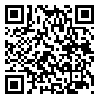دوره 5، شماره 4 - ( 7-1402 )
جلد 5 شماره 4 صفحات 14-1 |
برگشت به فهرست نسخه ها
Download citation:
BibTeX | RIS | EndNote | Medlars | ProCite | Reference Manager | RefWorks
Send citation to:



BibTeX | RIS | EndNote | Medlars | ProCite | Reference Manager | RefWorks
Send citation to:
Parajuli A, Basyal C R, Baral M, Adhikari H, Yadav S K, Basnet J B et al . Status, patterns, and trends of human-wildlife conflict in the buffer zone of Chitwan National Park, Nepal. JAD 2023; 5 (4) :1-14
URL: http://jad.lu.ac.ir/article-1-397-fa.html
URL: http://jad.lu.ac.ir/article-1-397-fa.html
Status, patterns, and trends of human-wildlife conflict in the buffer zone of Chitwan National Park, Nepal. مجله تنوع جانوری. 1402; 5 (4) :1-14
چکیده: (4361 مشاهده)
Human-wildlife conflicts (HWC) are common in locations where human settlements and wildlife ecosystems intersect. Conflict between people and wildlife is a significant conservation issue that is challenging to resolve. Therefore, this research aims to reveal the trends, status, and patterns of HWC in the Buffer Zone (BZ) of Chitwan National Park (CNP) from July 2012 to July 2021. Primary data were collected through household surveys, key informant interviews (KIIs), direct observation, and secondary data from park offices, the Buffer Zone User Committee (BZUC), and institutions through reports, documents, and booklets. Our study shows crop raiding was the most common and notable problem, followed by livestock depredation, with 4416 documented cases. According to the report, elephants are the biggest conflict-causing species, accounting for 37.86% of overall losses. HWC occurrences peaked in 2018, accounting for 23.41% of total incidents from July 2012 to July 2021. During the research period, victims of HWC received compensation totaling ~0.805 million US dollars (106641196.00 Nepalese rupees). Autumn is identified as the greatest season for HWC, owing to paddy harvesting, which draws animals. Most people believe that the population density of wildlife increases in the park due to positive human participation. By adopting a participatory management approach to conservation, the park has the potential to increase the number of locals who benefit from it significantly.
نوع مطالعه: مقاله پژوهشی اصلی |
دریافت: 1402/7/8 | پذیرش: 1402/10/4 | انتشار: 1402/10/10
دریافت: 1402/7/8 | پذیرش: 1402/10/4 | انتشار: 1402/10/10
| بازنشر اطلاعات | |
 |
این مقاله تحت شرایط Creative Commons Attribution-NonCommercial 4.0 International License قابل بازنشر است. |




